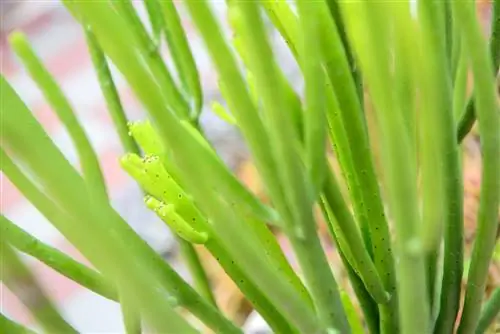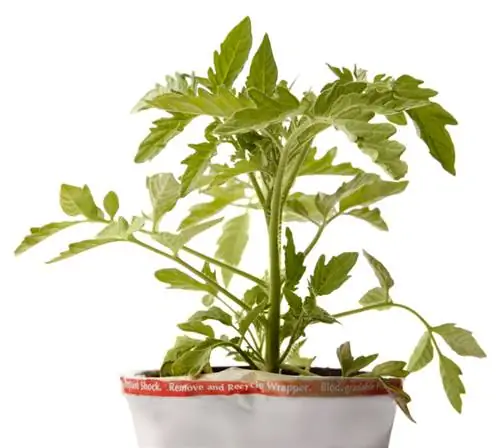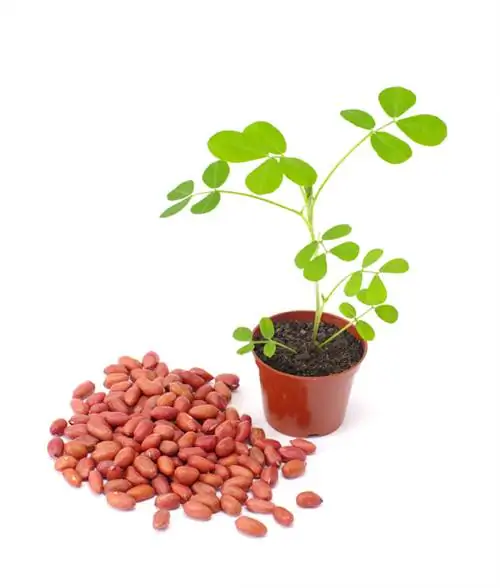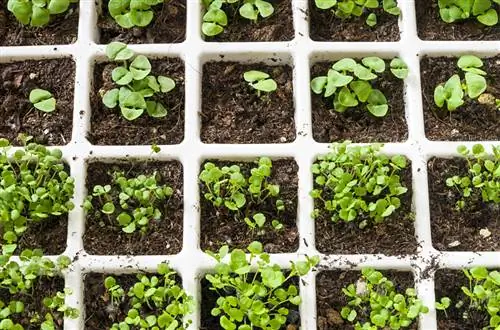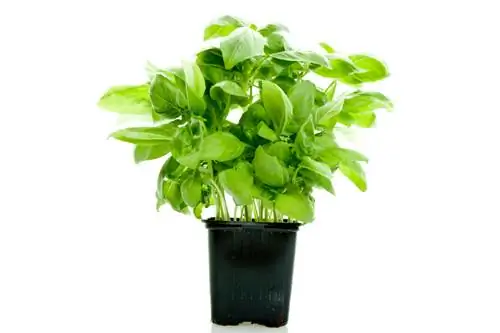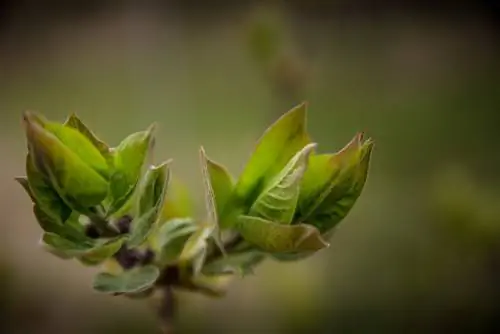- Author admin [email protected].
- Public 2023-12-16 16:46.
- Last modified 2025-01-23 11:21.
The Euphorbia tirucalli, which belongs to the spurge family, is also known as the pencil bush with its very special appearance of pencil-thick branches and the characteristically tangled growth habit. Although this plant, like other species of milkweed, is not frost hardy, it is relatively easy to propagate with good care.
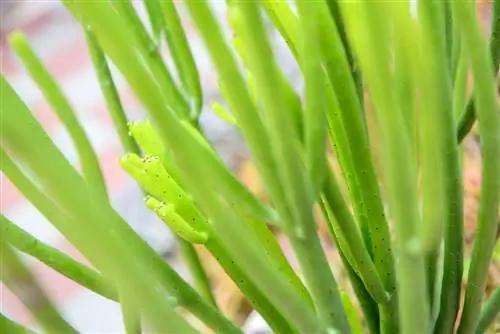
How to propagate Euphorbia tirucalli?
To propagate Euphorbia tirucalli, cut 12-15 cm long cuttings just below a leaf node in spring or early summer. Allow the interfaces to dry for 48 hours and then place them in a lean substrate, e.g. cactus soil. Water little and after about four weeks fresh shoots should indicate successful rooting.
Caution is also required when caring for the pencil bush
In general, a certain duty of care applies when dealing with spurge plants, as the milky plant sap is in most cases relatively poisonous. A certain degree of caution is therefore advisable if children or pets are temporarily unsupervised in the living space. Since Euphorbia tirucalli is usually propagated by cuttings, it is logical that the plant sap escapes from the thick, fresh green branches of the shrub. Be sure to wear gloves when cutting the cuttings to avoid coming into contact with the caustic and poisonous plant sap. Sensitive people may otherwise quickly experience skin redness or blistering. If the plant sap gets onto mucous membranes, into open wounds or into the stomach, the consequences can be even more threatening.
Cut pencil bush cuttings correctly
In order for optimal root formation to occur, the cuttings of the pencil bush Euphorbia tirucalli should be cut in spring or early summer if possible. In addition, the following parameters have proven to be favorable for successful propagation:
- Length of the cutting: about 12 to 15 cm
- Cut directly below a leaf node
- after cutting, allow the interfaces to air dry for about 48 hours
- warm, bright location without direct sunlight
While a fully grown pencil bush prefers to thrive in bright sunlight, cuttings should be placed in a somewhat shaded location due to their undeveloped roots and the resulting limited moisture absorption.
Suitable substrate for the rooting phase
After drying, the cuttings can be placed in a lean substrate. This can, for example, consist of cactus soil (€12.00 on Amazon) or contain sand and coconut fibers. During the first four weeks it is important not to water the cuttings too often. However, covering them with foil or growing them in an indoor greenhouse can ensure that the cuttings do not dry out during this time. After about four weeks, fresh shoots should show whether the rooting of the cuttings was successful.
Tip
Unlike many other houseplants such as coleus, you cannot let the offshoots of the pencil bush root in a glass of water. As offshoots of a succulent plant, the cuttings would otherwise rot rather than root.

